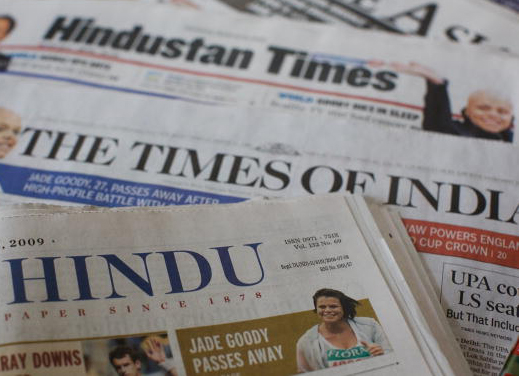
India must speed up reforms to ensure stability in financial markets: ADB
Manila-based Asian Development Bank said the government must hasten fiscal reforms to ensure stability in financial markets, which have seen intense volatility in the last few months. The Indian economy was under pressure owing to, among other things, the recent depreciation of the rupee, ADB said in an update of the Asian Development Outlook 2013. Changyong Rhee, chief economist of ADB, said, “The recent financial market turbulence is a timely reminder of the need for structural and fiscal reforms, not just to ensure long-term growth, but also to keep financial markets stable in the short run.” The government’s corrective measures were useful in alleviating immediate pressures in the financial and currency markets, ADB said, but required macroeconomic policies should be continued. The rupee depreciated by nearly 20% against dollar from the start of the year through the end of August, somewhat deeper than the depreciation endured in several other large emerging markets. External and domestic factors both contributed to the loss in the currency’s value. The investors’ fears of an imminent tapering by the US Federal Reserve of its quantitative easing triggered a sell-off of emerging market assets. The outsized impact in India was driven not only by its large current account deficit but also by domestic factors, including large budget subsidies, inflation. The perception that the revival of growth needed to win back foreign and domestic investors will be delayed also had bearing on market activity, it said. The government has taken steps like raising interest rates to support currency and cap on outward capital transfers to address financial market concerns. It also reduced impediments to attract inward for foreign direct investments to bolster growth prospects, ADB said.
(Source: Business Standard)
Falling rupee boosts medical tourism; imports hurt
The falling rupee has put hospitals in a unique situation; while they stand to gain from the boost to medical tourism, cost of importing medical devices has also gone up considerably. Major hospitals in the city are upbeat about the boost the depreciating Indian currency can give to international patient arrivals here. Apollo Hospitals, Gandhinagar, Gujarat, which now gets around 5-10 per cent patients from overseas, is eyeing to take that up to 35 per cent of net patient admissions over the next few years. Abhijat Sheth, director, medical services, Apollo Hospitals, Gandhinagar said, "We get around 15 to 20 international patients per month who mainly come for transplant surgeries, cardiac and cancer surgeries. The cost of these surgeries is around ten times more in major western countries." He further added that while a knee replacement surgery costs around $4,500 (Rs 2.8 lakh) in Ahmedabad, it would cost in the range of $35,000-45,000 overseas (Rs 21.8- 28 lakh). "Ahmedabad has already earned a reputation as preferred knee replacement surgery destination, and on an average, around 5,000-7,000 such surgeries happen in the city per year," Sheth said. Cosmetic surgery is emerging as a favourite amongst international patients, especially because of the huge cost difference. In India, cosmetic and dental surgery is very economic compared to most western countries, almost at one-tenth of the cost. Hospitals feel that medical tourism here is getting better with growing global network, increasing insurance linkage, better transport and local amenities. While the falling rupee has been a boon for attracting more international patients, at the same time, it has also raised the cost of importing medical devices.
(Source: Business Standard)
Medicines to get lot cheaper under new drug price policy
Getting better is getting cheaper. The new drug price policy, the first after 18 years and expected to fully come into effect over the next six months, will reduce average middle class household spend on medicines by over 20%. For some crucial medicines, savings could be as much as 50% or more. The drug price regulator is crunching numbers to measure the impact of the new pricing policy. And initial estimates suggest significant savings in middle class medicine budgets, which spends a large part of its regular healthcare budget on medicines treating lifestyle-related diseases like diabetes and hypertension. Price cuts will be the steepest in this class of drugs. So, going forward, savings could be more, said government officials working on the new drug price policy.
(Source: Economic Times)
Trade gap set for huge improvement on lower imports: Analysts
India's Current Account Deficit is likely to narrow during 9 months (July-March) of the current fiscal to touch a low of 1.5 per cent of GDP because of lower gold imports, higher overall exports and a drop in imports due to tapering domestic demand, analysts say. CAD will be less than USD 10 billion in Q2 (July- September), which will be 1.5-1.7 per cent of GDP, and for the whole year we maintain that CAD will be around 3.8 per cent of GDP or USD 67-68 billion. CAD, which indicates imports of goods services and transfer are higher than their exports, widened to 4.9 per cent of GDP, or USD 21.8 billion, in Q1 of FY14 as against 4 per cent of GDP, or USD 16.9 billion, in the year-ago quarter. During July-August, exports grew 12.3 per cent, while imports fell 3.6 per cent, Crisil noted. Gold imports have already come down with July-August figure nearly 300 tonne lower over the first quarter, it said. Measures announced by RBI and the Government such as foreign borrowings of state-owned financial institutions and public sector oil companies, and steps to attract non-resident deposits would help garner USD 11 billion, the analysts said.
(Source: Financial Express)
Economic Section
Royal Thai Embassy















